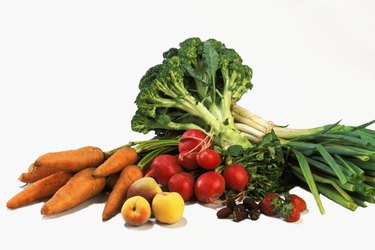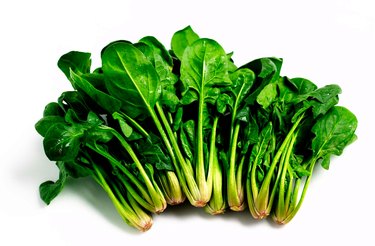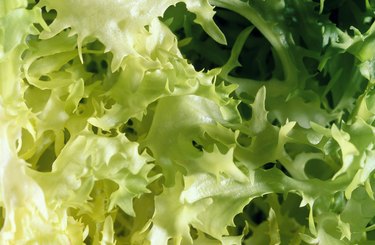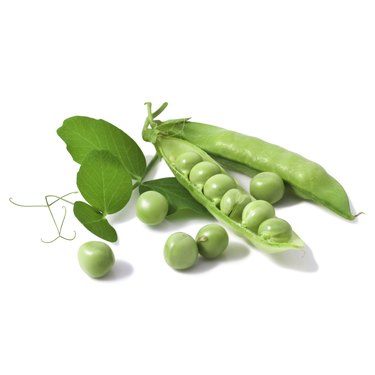
With the exception of soybeans, plant sources of protein lack one or more of the essential amino acids found in animal-based foods. Although you can get plenty of the essential amino acids by eating a well-planned vegetarian diet, most varieties of vegetables contribute a small percentage of the protein consumed in an average diet that includes animal products.
Identification
Video of the Day

The U.S. Food and Drug Administration assigns nutrients and macronutrients a daily value, which represents the suggested intake of a particular nutrient. The daily value for protein is 50g for adults, based on a 2,000-calorie diet. A good source of protein provides 5 to 10g. For a vegetable to qualify as a low-protein source, it must contain 4g or less of protein.
Video of the Day
Types

Although the protein content of vegetables varies by type, most vegetables are considered low in protein. Green vegetables, such as lettuce, cabbage, bell pepper and asparagus provide only 1 to 2g of protein per serving. Broccoli and spinach are exceptions, providing 4 and 5g per serving, respectively. Orange vegetables, including carrots, sweet potatoes and squash also contain only 1 to 2g.
Starchy vegetables are generally higher in protein than other varieties. Sweet potatoes and corn, for example, provide 3 and 4g of protein. Green peas qualify as a good source of protein, providing more than 8g of protein per 1-cup serving, according to the U.S. Department of Agriculture.
Significance

A variety of foods, including vegetables, contain at least some protein and contribute to overall protein intake. Aside from legumes, vegetables are generally not recognized for their protein content. Vegetables are good sources of several other nutrients, including potassium, vitamin A, vitamin C and fiber. Vary the vegetables in your diet to ensure you get the nutritional benefits different types have to offer.
Considerations

Most people get enough protein without counting grams. Getting too much protein is unlikely unless your diet includes a disproportionate amount of high-protein foods, such as meat and poultry. In general, 10 to 35 percent of your calories should come from protein, according to the Centers for Disease Control and Prevention. Individuals with kidney disease may need to follow a low-protein diet and should seek advise from a health professional to develop an appropriate eating plan.
Exceptions

Dry beans and peas can count as either vegetables or as protein sources in the meat and beans group, according to the USDA. If you consume meat, fish and poultry, dry beans and peas usually count toward fruit and vegetable intake. Legumes, such as soybeans, chickpeas, kidney beans, black-eyed peas and pinto beans, are good sources of protein, providing 11g or more in a 1-cup serving. On the other hand, a few varieties of vegetables are protein-free, including celery, green onion and radishes.